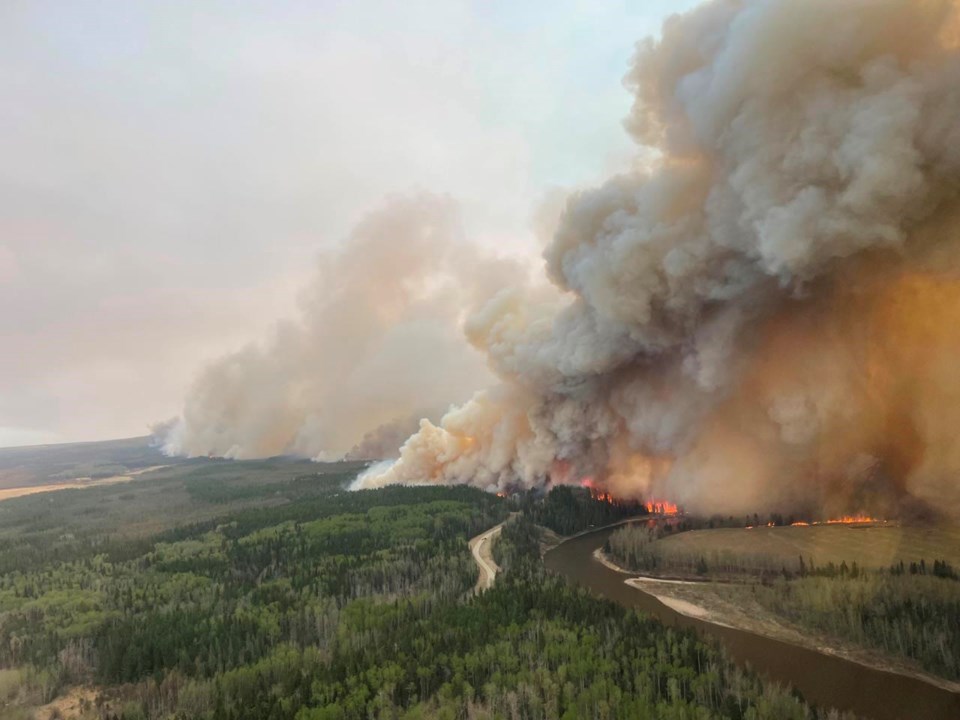CALGARY ÔÇö Some oil and gas companies in Alberta are once again shutting in production as hot and dry conditions exacerbate the wildfire situation in the energy-producing province.
Volatility caused by shifting winds and changing temperature conditions, combined with the sheer size of the geographic area affected, is making it hard even for companies that are directly affected to get a good read on the situation, said Grant Fagerheim, president and CEO of Whitecap Resources Inc.
"YouÔÇÖre trying to stay on top of it. You're in constant communication with your field supervisors," Fagerheim said. "But we're living in real time right now."
Whitecap has drilling operations across central and northern Alberta and into northeast sa╣·╝╩┤½├¢, and Fagerheim has spent the last 10 days assessing and reacting as existing fires move and spread and new blazes pop up in other locations.
The company first moved to temporarily shut in 12,000 barrels per day of production on May 5, then increased that to 40,000 last Sunday. It restarted some of its operations this week as cooler temperatures and rain brought relief in some areas, but conditions worsened again on Tuesday.
The company now has approximately 27,000 barrels per day of production curtailed, and Fagerheim said he estimates that hundreds of the company's employees and contractors have either been evacuated or are prepared to evacuate.
Other employees are working long days in hot, smoky conditions to ensure the safety of infrastructure and equipment. Near the city of Fort St. John, sa╣·╝╩┤½├¢, which is under an evacuation alert, the company's operations are running on back-up power because more than 100 power poles have burned down, Fagerheim said.
While none of the company's infrastructure has been damaged, Fagerheim said in some regions, flames have been "within a road allowance" of Whitecap's operations.
"People are tired. This is tiring. TheyÔÇÖre trying to take care of their families, moving their families out of their homes, into temporary housing," he said. "Our number one priority is the safety of our staff and our contractors and their families.ÔÇØ
There are currently 87 active wildfires in Alberta, 24 of which are out of control.
On Tuesday, Crescent Point Energy Corp. said it has once again shut in its entire production in the Kaybob Duvernay area, representing 45,000 barrels of oil equivalent per day (boe/d), after previously reactivating a portion of that production last week.
Other affected producers include Paramount Resources Ltd. ÔÇö which has temporarily curtailed approximately 45,000 boe/d in the Grande Prairie and Kaybob regions of Alberta ÔÇö and Baytex Energy Corp., which has curtailed approximately 24,000 boe/d due to its own shut-ins as well as third-party interruptions.
On Monday, Vermilion Energy Inc. lowered its second-quarter production guidance as a result of the wildfire situation, saying it now expects production in the second quarter of the year to average 80,000 to 83,000 boe/d, down from a previous forecast of 84,000 to 86,000 boe/d.
"On any given day, I think the situation's pretty dynamic," said ATB Capital Markets analyst Patrick O'Rourke. "Back of the envelope, I'd say a couple of hundred thousand boe/d (in total) could be shut in right now."
That works out to about 10 per cent of total production from the Western Canadian Sedimentary Basin, O'Rourke said.
Rory Johnston, a Toronto-based energy analyst and founder of the Commodity Context newsletter, said the companies affected by the fires are much smaller than the massive oilsands corporations that were affected by the Fort McMurray wildfire in 2016.
That event resulted in a temporary 14 per cent decline in crude oil exports from Alberta as oilsands facilities had to be taken off-line and were not fully restored for several months.
But Johnston said while oil and gas prices are not yet seeing much of an impact, the longer the current fire situation lasts, the more likely it is that the affected companies will see their second-quarter earnings suffer as a result.
ÔÇ£My general feeling is that while itÔÇÖs not going to be material yet for the market, it could be material for some of these producers," he said.
He added that increased wildfire activity in the years ahead will add more volatility to the Canadian energy sector.
ÔÇ£Wildfires are turning into this very unpredictable perennial risk for the sector," Johnston said.
This report by The Canadian Press was first published May 16, 2023.
Companies in this story: (TSX:CPG; TSX:WCP; TSX:VET; TSX:BTE; TSX:POU)
Amanda Stephenson, The Canadian Press



